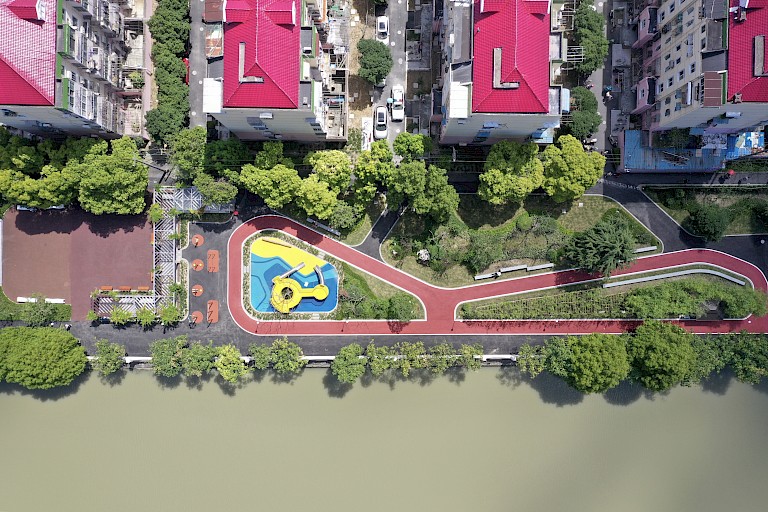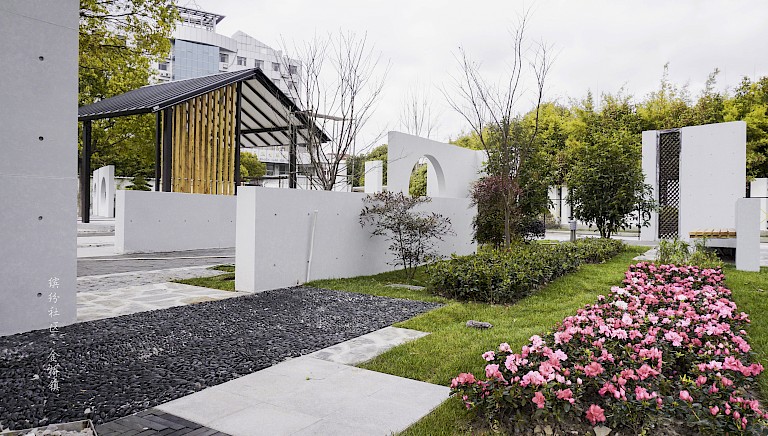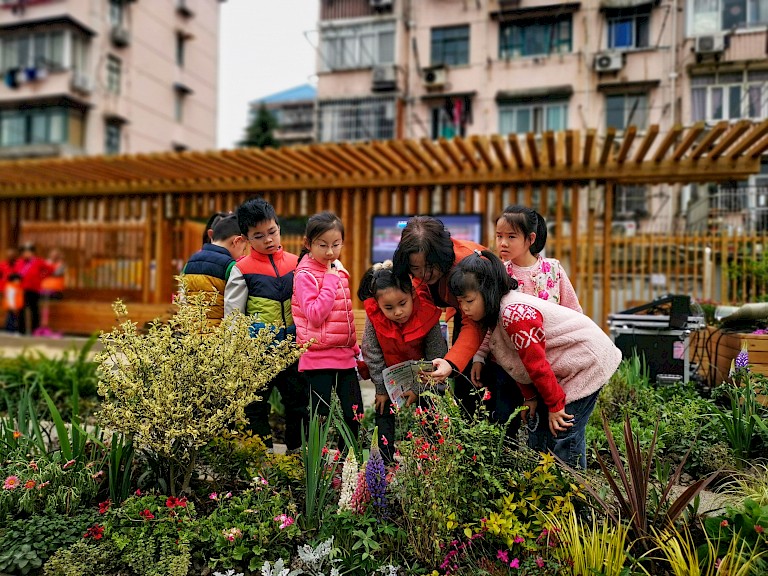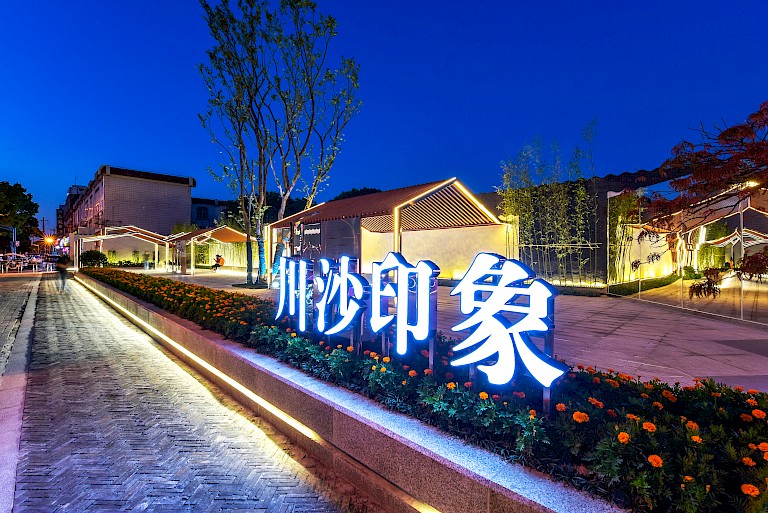



Colorful community construction working group;
Wuyang Architecture Studio (Feng Lu), Zi Yunzhai Architecture (Tong Ming);
Lujiazui Community Charity Foundation (Zhang Jiahua);
Five Residents Autonomous Team of Shanghai Iron and Steel (Li Guoming), Zhoupu Zhongjin Haitang Bay Little Eagle Parent-child Club Autonomous Team, Tangzhen Poly Residents Autonomous Team, etc.
1. Creative background
In the context of Shanghai's promotion of urban renewal, facing the increasingly crowded city and scarcity of land resources, as well as the situation that a large number of old communities cannot meet the current needs of people in terms of environment, space, quality, etc., Pudong New Area is based on " Work requirements such as Opinions on Further Innovating Social Governance and Strengthening Grass-roots Construction, "Shanghai 15-Minute Living Circle Planning Guidelines" and other work requirements, make the micro-renewal of community public spaces closely related to residents' lives an important part of urban fine managementListed in the district committee and district government's key promotion, supervision work and annual practical projects.
Through the construction of colorful communities, on the one hand, the quality of the public space in the community is improved, and the "inside and outside the walls" are exquisitely changed, integrating the sense of identity and belonging of community members, and creating a large community family with a human touch; on the other hand, In terms of community micro-renewal, starting from small and micro facts that can attract the common attention and participation of community residents, but are not easy to cause opposition and conflicts, build a multi-party collaborative governance platform such as the government, residents, experts, professional teams, and social organizations. Stimulate the vitality of community autonomy and co-governance, and strive to find a new way of social governance.
2. The relationship between the work and the place:
The construction of the colorful community is led by the District Planning and Resources Bureau, and is carried out at the district level with streets and towns as units. When selecting locations, fully consider the town’s work deployment and residents’ wishes, and focus on 9 types of public space elements closely related to residents’ lives (pocket parks, corner spaces, sports venues, vibrant streets, slow traffic networks, tree-lined streets, public Facilities, art spaces, Green Action) and child-friendly public spaces. The project selection, design, and construction process implement the “one map, three meetings” system to ensure the participation of residents in the whole process and all age groups, increase public participation, sense of gain, and satisfaction, and ensure and deepen the work of community autonomy and co-governance.
3. Whether there is interdisciplinary cooperation
In the development of colorful communities, the District Planning and Resources Bureau, which takes planning as its core function, has extensively cooperated with the District Civil Affairs Bureau, the Youth League and District Committee, and the District Women and Children Working Committee Office, which focuses on social work, starting from their respective areas of expertise. , Incorporate social activities and discussions into the design and construction of the micro-update program, and jointly invite experts and scholars in the fields of planning, construction, and sociology to discuss various micro-update matters. At the same time, college design resources are introduced to closely integrate the creativity and practice of college students with the daily needs of community residents, so that college design resources can enter the community, achieve a win-win situation for the government, communities, colleges and students, and deepen community autonomy and co-governance.
Through the combination of interdisciplinary and cross-field, the construction of the colorful community continues to advance smoothly and rapidly, and has achieved the dual effects of social governance and space optimization.
4. The creative concept and artistic style characteristics of the work
The construction of the colorful community implements the important concept of “people’s city, people’s city for the people”, which is different from the traditional city construction model of “large demolition and construction”. Energetic and shared social public spaces can enhance residents' sense of happiness, gain and satisfaction, and create a more warm people's city.
The colorful community construction project produces a bottom-up demand collection mechanism. Based on the investigation by the District Planning and Resources Bureau and the streets and towns, it is proposed by the business committee, social organization, or enterprise, and approved by the neighborhood committee and the business committee. “Hearings” and other methods to extensively solicit the wishes of residents, resulting in preliminary projects to be reported to the townJiezhen promotes the micro-update work through websites, WeChat, activity manuals, community activities, etc., and invites mentors, community planners, relevant departments, professional institutions, social organizations, etc. to screen out projects that meet the needs of the community and meet the wishes of the residents; the year of the project Produced and completed that year.
Under the guidance of mentors and community planners, Jiezhen carried out project design work through entrustment, solicitation and other methods. After the plan was formed, the neighborhood committee and business committee absorbed public opinion and wisdom through “coordination meetings”, public announcements, and voting, so as to realize the public Create crowdfunding, work together, and select the design plan that the residents are satisfied with. During the construction process, the residents' opinions were fully listened to in terms of material selection, construction period and construction methods, promoted the spirit of craftsmanship, and encouraged community residents to self-maintain the project.After the implementation of the project, the neighborhood committee and the property committee will evaluate the pros and cons of the design plan and the effectiveness of the implementation through the "conference committee" and other methods. Set benchmarks and models, form reproducible and extendable experience, and realize the institutionalization, standardization and normalization of autonomy and co-governance.
The construction of colorful community establishes a linkage mechanism with unification of powers, clear responsibilities, each performing its own advantages, and each performing its own duties. It insists on lowering the center of gravity and sinking resources, giving full play to the basic role of the grassroots in social governance, and giving full play to the coordinating ability of district-level departments , To fully mobilize the creative enthusiasm of outstanding designers.
Streets and towns are the main body of responsibility for promoting the construction of colorful communities. They should effectively integrate internal construction, autonomy and other line forces, focus on improving the level of refined community management, and focus on improving the level of community autonomy. Social organizations can be introduced to participate in project operations through government purchases of services, etc. .
The District Planning and Resources Bureau is responsible for overall coordination and formulation of the mechanism, responsible for guiding the suitability and effectiveness of the project, and controlling the design quality.
All copyright belongs to Shanghai Academy of Fine Arts, Shanghai University.



